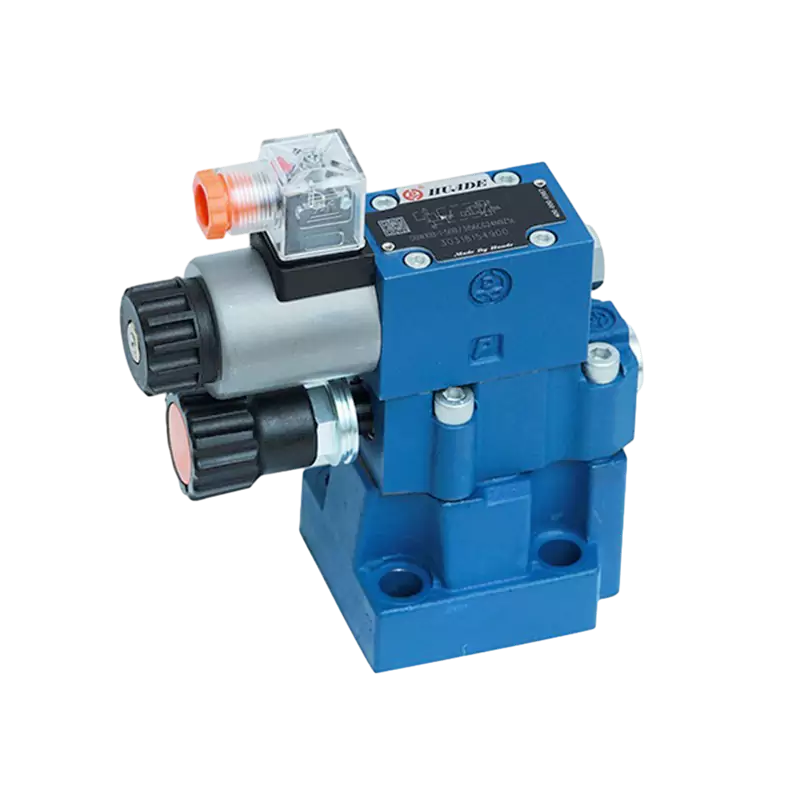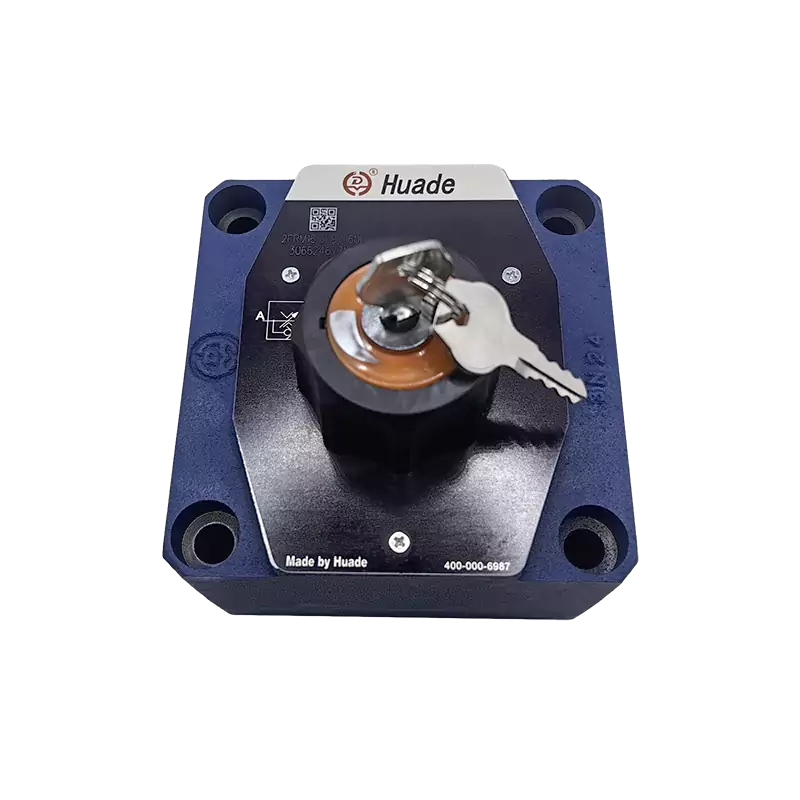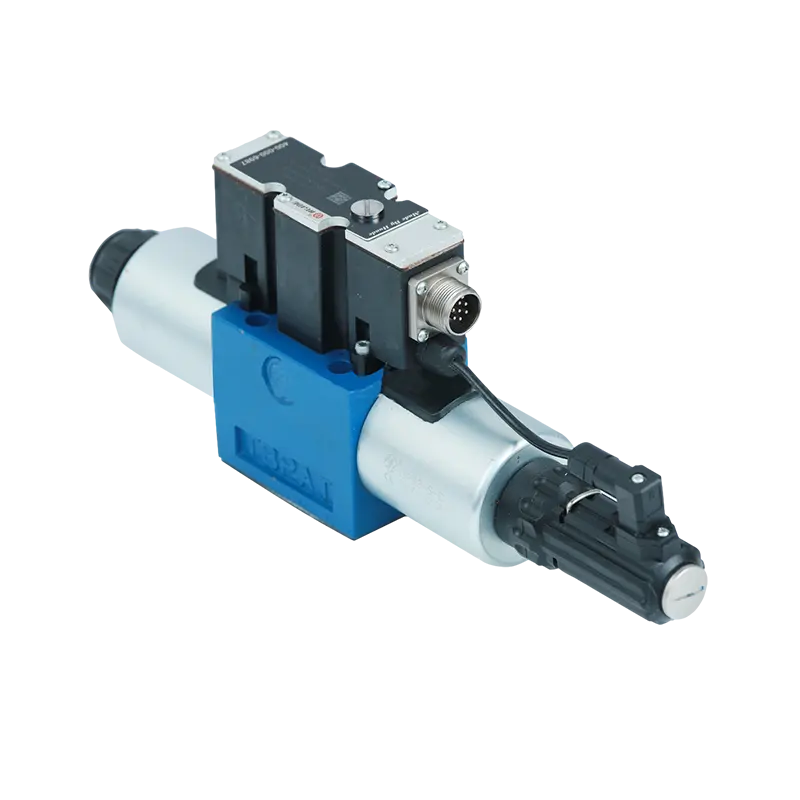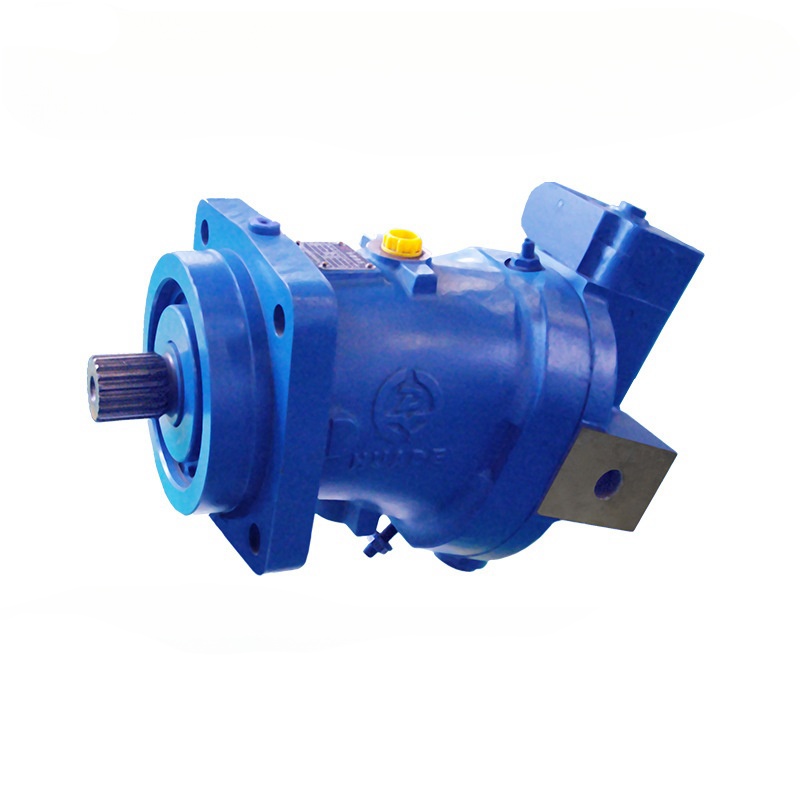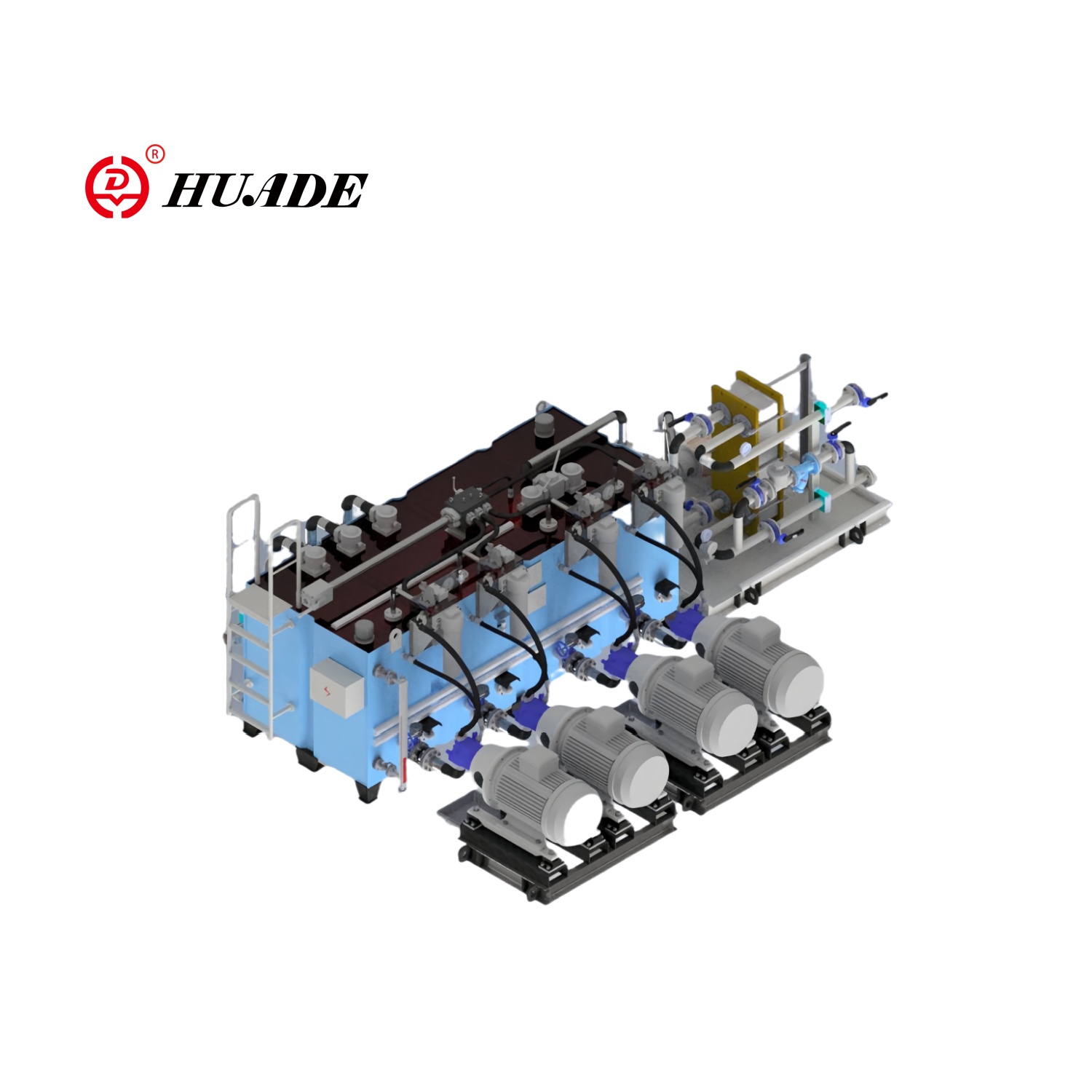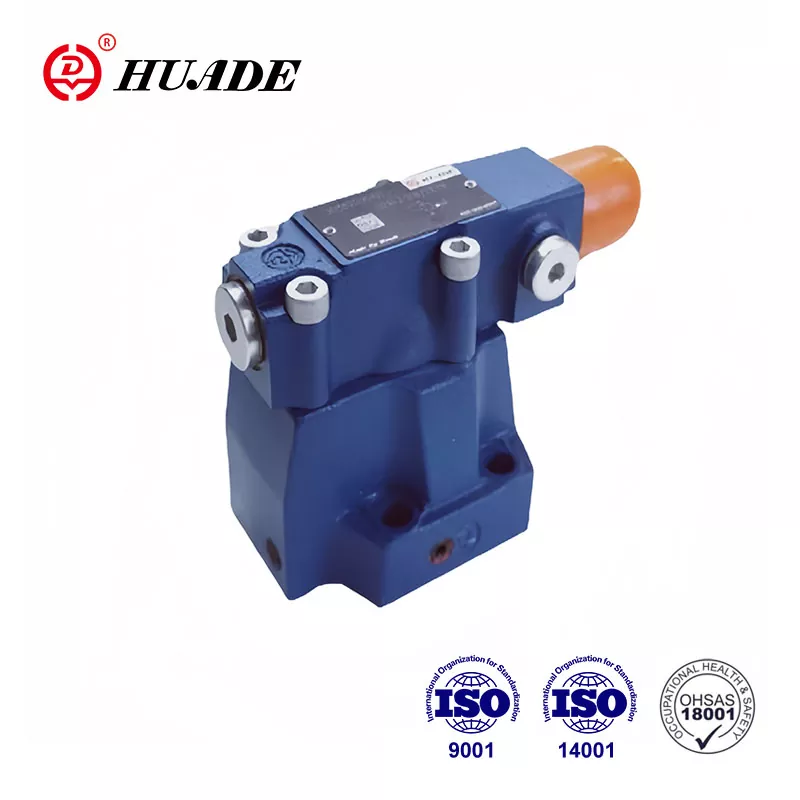
Ever watched a garbage truck work and wondered: "How does it know to lift the container first, then tip it perfectly?" Or maybe you've seen factory robots working in perfect sequence and thought, "What makes them so coordinated?"
The answer might surprise you - it's often a simple but brilliant device called a pressure sequence valve. And by the end of this guide, you'll understand exactly how these "mechanical brains" keep our world running smoothly.
What is a Pressure Sequence Valve? (The Simple Answer)
A pressure sequence valve (part of pressure control valve systems) is like a smart traffic light for hydraulic systems. Just as a traffic light controls when cars can go, this valve controls when different parts of a machine can start working.
Here's the key idea: It stays closed (red light) until pressure builds up to a specific level, then opens (green light) to let hydraulic fluid flow to the next component. This creates automatic sequencing without any computers or electrical controls needed.
Quick Example:
Think about making a peanut butter sandwich:
Step 1: Get bread ready (primary action)
Wait: Make sure bread is properly positioned
Step 2: Add peanut butter (secondary action)
A pressure sequence valve does the same thing for machines - it makes sure Step 1 is completely finished before Step 2 begins.
Why Your Machines Need Pressure Sequence Valves
Wondering why we can't just let everything happen at once? Here's why proper sequencing matters:
Without sequence control, you'd have chaos. Imagine if your car's transmission tried to shift gears while the engine was still starting up, or if a 3D printer started printing before the bed was heated. That's exactly what happens in hydraulic systems without proper sequencing.
The Business Case (Why Engineers Love Them):
Zero electricity required - Works in explosive environments where electronics fail
Bulletproof reliability - Fewer parts mean fewer failures (typical lifespan: 10+ years)
Cost savings - Can replace $5,000 PLC systems with a $200 valve
Maintenance simplicity - Most technicians can service them with basic tools
Real question: Would you rather trust a computer program or a simple mechanical device in a dirty, high-pressure environment? Most experienced engineers choose mechanical every time.
How Does a Pressure Sequence Valve Work?
The working principle is actually quite simple:
The Basic Process:
Primary action starts - The first cylinder or motor begins working
Pressure builds up - When the first action is complete, fluid stops moving and pressure rises
Valve opens - Once pressure reaches the set point (like 400 PSI), the sequence valve opens
Secondary action begins - Fluid flows to the second cylinder or motor
Think of it like a dam in a river. The dam (sequence valve) holds back water until the water level (pressure) gets high enough. Then it opens the gates to let water flow downstream.
Key Parts (What's Inside):
Valve body - The main housing (like a house)
Spring - Sets the "trigger pressure" (like a door lock)
Adjustment screw - Your pressure dial (like a thermostat)
External drain port - Keeps readings accurate (like a pressure relief hole)
Pro tip: The external drain is crucial - without it, backpressure can fool the valve into opening at the wrong time. Always specify external drain in your system design.
Hydraulic Sequence Valve Types: Which One Do You Need?
Confused about which type to choose? Here's the breakdown that will save you from costly mistakes.
[Compare with other pressure control valve types]
1. Direct-Acting Hydraulic Sequence Valves
Think of it as: A simple spring-loaded door
Response time: Lightning fast (2-10 milliseconds)
Pressure range: Up to 5,000 PSI typically
Cost: Budget-friendly ($50-$300)
Best for: Small mobile equipment, quick-cycle applications
Downside: Can be "jumpy" at high pressures
2. Pilot-Operated Pressure Sequence Valves
Think of it as: A sophisticated two-stage system
Response time: Slower but steady (≈100 milliseconds)
Pressure range: Up to 10,000+ PSI
Cost: Higher investment ($200-$1,500)
Best for: Large industrial presses, precision manufacturing
Advantage: Rock-solid stability under varying conditions
Which should you choose? If you need speed and simplicity, go direct-acting. If you need precision and handle high flows, pilot-operated is your answer.
Pressure Sequence Valve Applications: Where You'll Find Them Working
Curious where these valves actually work? They're everywhere - you probably encounter them daily without knowing it.
Manufacturing & Industrial Equipment
CNC machining centers: Clamp workpiece → start cutting → retract tools
Injection molding: Close mold → inject plastic → eject part
Hydraulic presses: Position material → apply pressure → release and eject
Mobile Machinery Applications
Garbage trucks: Lift container → tip and dump → return to position
Construction equipment: Deploy outriggers → lift load → retract boom
Agricultural machinery: Raise implement → engage PTO → start operation
Specialized Systems
Telescopic cylinder control: Extend sections in proper sequence for smooth operation
Multi-stage hydraulic systems: Coordinate multiple actuators without electronic controls
The pattern? Anytime you see hydraulic equipment doing things in perfect order, there's likely a sequence valve orchestrating the show.
How is a Pressure Sequence Valve Different from Other Valves?
It's easy to confuse pressure sequence valves with other similar valves. Here's how to tell them apart.
[Learn more about relief valve functions]
Sequence Valve vs. Relief Valve
| Feature | Sequence Valve | Relief Valve |
|---|---|---|
| Purpose | Controls order of operations | Protects system from high pressure |
| Default state | Closed | Closed |
| When it opens | At set pressure to start next action | Only when pressure gets too high |
| Where fluid goes | To next actuator | Back to tank |
Sequence Valve vs. Reducing Valve
| Feature | Sequence Valve | Reducing Valve |
|---|---|---|
| Default state | Normally closed | Normally open |
| What it monitors | Inlet pressure | Outlet pressure |
| Purpose | Start next operation | Limit downstream pressure |
Hydraulic Sequence Valve Selection Guide: Get It Right the First Time
Tired of guessing which valve will work? Here's your step-by-step selection process:
Step 1: Know Your System Requirements
Maximum system pressure: Valve must handle 25% above your highest pressure
Secondary circuit flow rate: Calculate GPM needed (valve must handle 20% more)
Required accuracy: ±50 PSI for general use, ±10 PSI for precision work
Response time needs: Fast (<50ms) or stable (>100ms)
Step 2: Environmental Reality Check
Ask yourself these questions:
What's the temperature range? (Standard seals work -10°F to +200°F)
How dirty is the environment? (Consider contamination resistance)
What hydraulic fluid type? (Petroleum, synthetic, bio-based?)
Any explosive atmosphere concerns? (May require special certifications)
Step 3: Calculate Your Valve Sizing
Simple formula for flow capacity:
Required Cv = Flow Rate (GPM) ÷ √(Pressure Drop across valve)
Example: 20 GPM secondary flow with 100 PSI available pressure drop needs Cv = 20 ÷ √100 = 2.0
Pro tip: Always size your valve 20-30% larger than calculated to avoid operating at maximum capacity.
Pressure Sequence Valve Installation Tips: Avoid Costly Mistakes
Ready to install but worried about getting it wrong? Follow these field-tested guidelines:
Critical Setup Parameters
Set pressure calculation: Primary load + 50-100 PSI safety margin
Relief valve coordination: Set relief valve 150-200 PSI above sequence valve
External drain connection: Always connect to tank (never plug this port!)
Mounting orientation: Follow manufacturer's specs (usually any position OK)
Installation Sequence That Works
Pre-installation check: Verify all ports and connections
Mount valve: Use proper torque specs (typically 15-25 ft-lbs for fittings)
Set initial pressure: Start low, adjust upward during testing
Test cycle: Run several complete cycles before final adjustment
Fine-tune: Adjust set pressure for optimal performance
Common rookie mistake: Setting the pressure too high initially. Always start low and work up - it's easier to increase pressure than fix damaged equipment.
Sequence Valve Troubleshooting: Fix Problems Fast
System not sequencing properly? Here's your diagnostic roadmap:
Problem #1: Secondary Action Won't Start
Symptoms: Primary cylinder completes stroke, but secondary never activates
Quick diagnosis: Check system pressure gauge during primary stroke completion
Solutions (in order of likelihood):
Lower sequence valve set pressure
Clear blocked drain line
Replace weak or broken spring
Verify relief valve isn't opening too early
Problem #2: Premature Secondary Activation
Symptoms: Both actions try to happen simultaneously
Root causes: Set pressure too low OR unexpected pressure spikes
Fix strategy: Increase set pressure by 25 PSI increments until proper sequencing achieved
Problem #3: Erratic or Noisy Operation
What you'll hear/see: Chattering, vibration, inconsistent cycling
Usual suspects: Contaminated fluid, air in system, worn internal components
Action plan:
Check fluid cleanliness (should be ISO 18/16/13 or better)
Bleed air from all high points
If problems persist, rebuild or replace valve
Emergency diagnostic tip: If you're losing production time, temporarily bypass the sequence valve and operate manually while ordering parts.
Pressure Sequence Valve Maintenance: Maximize Your Investment
Want to avoid unexpected downtime? These maintenance strategies will keep your valves running for decades:
The 90-Day Inspection Routine
Visual check: Look for external leaks, corrosion, loose fittings
Pressure verification: Confirm set pressure hasn't drifted (±25 PSI tolerance)
Fluid analysis: Check contamination levels and fluid condition
Cycle counting: Track operations for predictive maintenance scheduling
Annual Maintenance Tasks
Complete system flush: Replace filters and hydraulic fluid
Valve calibration: Reset pressures to original specifications
Seal inspection: Check for wear before they fail catastrophically
Performance testing: Verify response times and pressure accuracy
Maintenance budget reality: Spending $200/year on preventive maintenance typically saves $2,000+ in emergency repairs and lost production.
Smart maintenance tip: Keep a spare valve configured and ready. When problems arise, swap valves and rebuild the failed unit offline - minimal downtime, maximum productivity.
Sequence Valve Technology Trends: What's Coming Next
Wondering if sequence valves will become obsolete? Here's what industry insiders know:
Smart Sequence Valve Integration
IoT sensors: Monitor cycles, temperature, and pressure drift
Predictive analytics: AI predicts failures 30-60 days in advance
Remote diagnostics: Check valve health from your phone
Cost reality: Smart valves cost 2-3x more but can reduce maintenance costs by 40%
Advanced Materials and Design
Nano-coating technology: Extends seal life by 300-500%
Composite valve bodies: Lighter weight, better corrosion resistance
Low-friction internals: Reduces energy losses by 15-25%
The Electronic vs. Mechanical Debate
Electronic control advantages: Infinitely programmable, precise, data-rich
Mechanical valve advantages: No programming needed, works without power, simpler troubleshooting
Industry reality: Even as electronics advance, mechanical sequence valves maintain strong market share in:
Cost-sensitive applications
Hazardous environments
Remote locations without reliable power
Simple systems where electronics add unnecessary complexity
Bottom line: Pressure sequence valves aren't going anywhere - they're evolving to be smarter while staying mechanically reliable.
Your Next Steps: Putting This Knowledge to Work
Ready to specify, install, or troubleshoot a pressure sequence valve? Here's your action plan:
For System Designers:
Calculate your requirements using the sizing formulas provided
Choose valve type based on speed vs. precision needs
Specify external drain - don't let contractors cheap out on this
Plan for adjustment access - technicians will thank you later
For Maintenance Teams:
Start that 90-day inspection routine immediately
Stock common spare parts (springs, seals, adjustment screws)
Document current set pressures before they drift
Train operators to recognize early warning signs
For Troubleshooters:
Always check the basics first - pressure, fluid level, filter condition
Keep a pressure gauge handy for quick diagnostics
Remember the external drain rule - it fixes 60% of sequence valve problems
Questions about your specific application? Most valve manufacturers offer free application engineering support - take advantage of their expertise.
Final thought: The best sequence valve is the one that's properly selected, correctly installed, and regularly maintained. Master these fundamentals, and you'll never have mysterious sequencing problems again.


